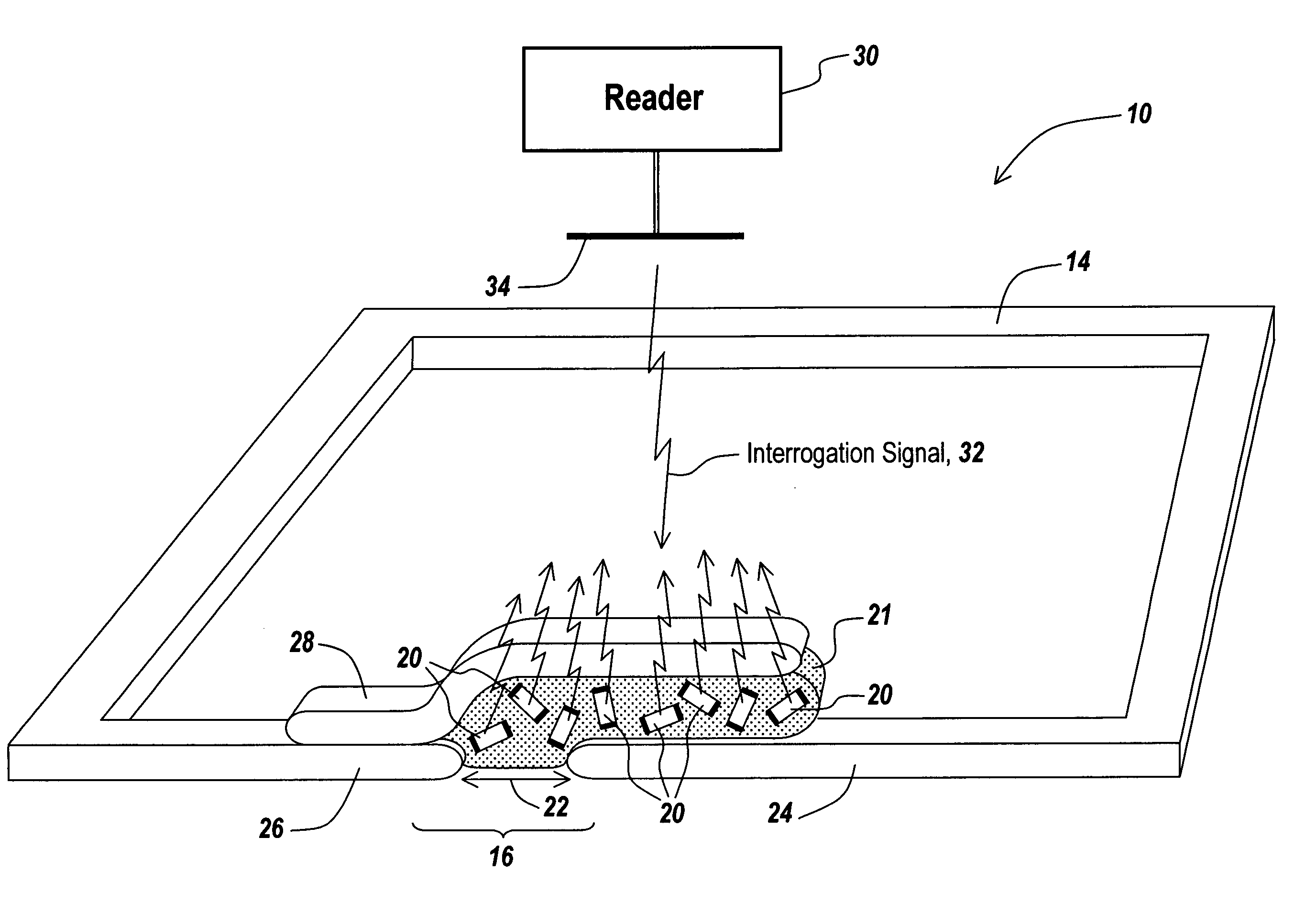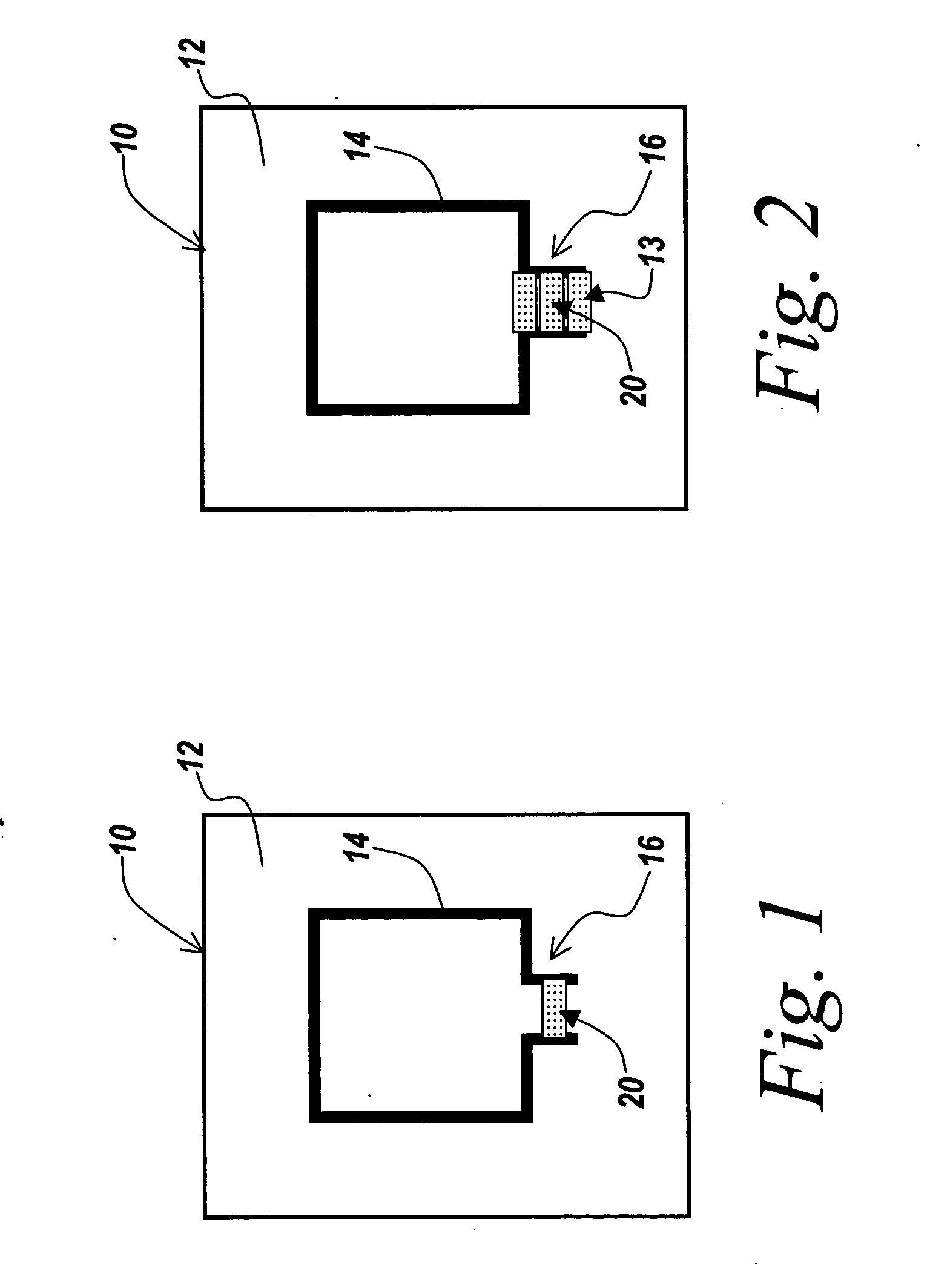RFID tag incorporating at least two integrated circuits
a technology of integrated circuits and radio frequency identification, applied in the direction of burglar alarm mechanical actuation, burglar alarm by hand-portable articles removal, instruments, etc., can solve the problem of negligible failure probability, achieve the effect of minimizing inter-chip interference, increasing power or gain, and increasing the ability of microradio chips to work together
- Summary
- Abstract
- Description
- Claims
- Application Information
AI Technical Summary
Benefits of technology
Problems solved by technology
Method used
Image
Examples
Embodiment Construction
[0032] By way of further background, radio Frequency Identification (RFID) tags have been utilized extensively to trace pallets of merchandise from a point of shipment to a final destination. The tags are typically passive devices that are read out with RF energy, usually in the 900 MHz range. These passive devices are parasitically powered by the RF energy impinging upon the antenna of the tag, thus powering the integrated circuits within the tag, with the result that the tag transmits the identity of the pallet in response to a probing signal from a reader in the vicinity of the tag.
[0033] While such RFID tags are now mandated for pallets in some industries, there is increased level of interest in item-level tagging, which involves placing a tag on the item itself as opposed to on a pallet of items.
[0034] However, in order to be able to make such tagging strategies possible for low-value items such as toothpaste and the like, techniques are required to be able to manufacture and...
PUM
 Login to View More
Login to View More Abstract
Description
Claims
Application Information
 Login to View More
Login to View More - R&D
- Intellectual Property
- Life Sciences
- Materials
- Tech Scout
- Unparalleled Data Quality
- Higher Quality Content
- 60% Fewer Hallucinations
Browse by: Latest US Patents, China's latest patents, Technical Efficacy Thesaurus, Application Domain, Technology Topic, Popular Technical Reports.
© 2025 PatSnap. All rights reserved.Legal|Privacy policy|Modern Slavery Act Transparency Statement|Sitemap|About US| Contact US: help@patsnap.com



